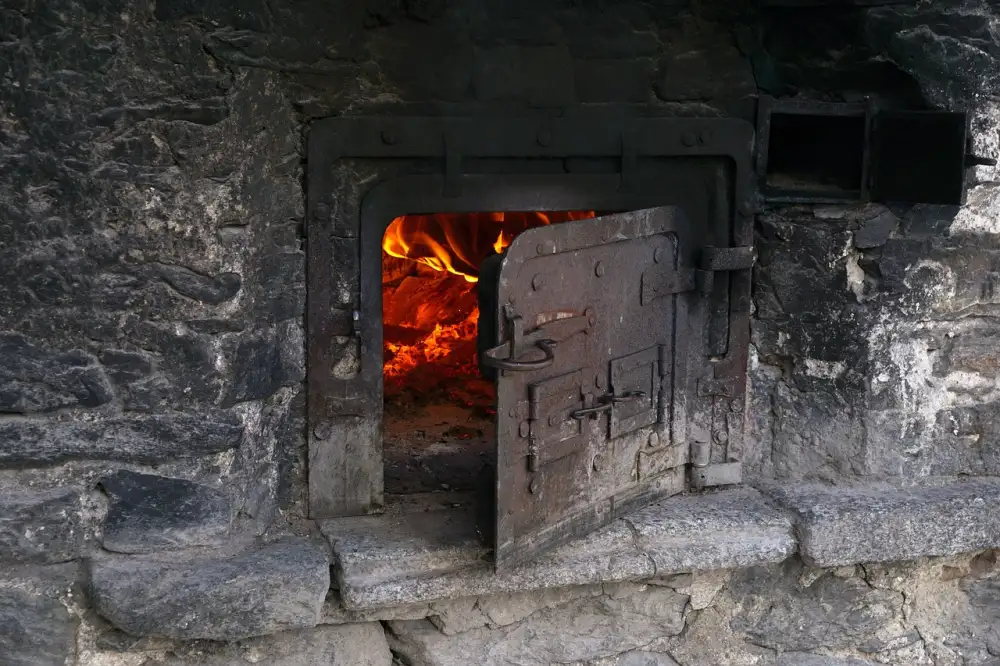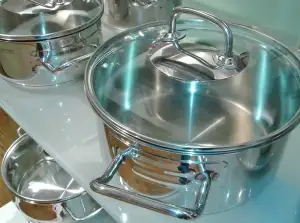Mastering the Art of Convection: A Guide on How to Use a Convection Oven at Home

Convection ovens have become increasingly popular in home kitchens, offering a faster and more efficient way to cook your favorite dishes. Unlike traditional ovens, which rely on radiant heat, convection ovens use a fan to circulate hot air evenly throughout the cooking chamber. This results in faster cooking times, more even browning, and crispier textures. Whether you're a seasoned chef or just starting out in the kitchen, mastering the art of convection cooking can elevate your culinary skills to new heights. In this guide, we will explore the basics of using a convection oven at home and provide tips for achieving delicious results every time. So let's dive in and unlock the secrets of this powerful kitchen appliance!
Understanding the Basics of a Convection Oven
A convection oven is a kitchen appliance that utilizes a fan and exhaust system to circulate hot air around the food. This constant movement of hot air ensures even cooking and browning, resulting in perfectly cooked dishes.
The main difference between a conventional oven and a convection oven lies in how heat is distributed. In a conventional oven, heat radiates from the bottom or top heating elements. However, in a convection oven, the fan helps distribute heat evenly throughout the oven cavity.
This even distribution of heat allows for faster cooking times and more consistent results. It also eliminates the need to rotate trays or pans during baking or roasting, as the hot air reaches all sides of the food simultaneously.
Convection ovens are particularly beneficial when it comes to baking pastries and bread. The circulating hot air creates a crispier crust while keeping the inside moist and fluffy. It's also great for roasting meats, as it helps seal in juices while achieving a beautiful golden brown exterior.
By understanding how a convection oven works, you can take full advantage of its capabilities and elevate your cooking skills to new heights.
Preheating Your Convection Oven
Preheating your convection oven is an essential step to ensure even cooking and optimal results. Unlike traditional ovens, convection ovens rely on a fan to circulate hot air, which means they require preheating to reach the desired temperature.
To preheat your convection oven, start by setting the temperature according to your recipe's instructions. It's important to note that convection ovens usually require a slightly lower temperature than conventional ovens due to their efficient heat distribution.
Once you've set the temperature, allow the oven to preheat for about 10-15 minutes. This will ensure that the entire oven cavity reaches the desired temperature and that any cold spots are eliminated.
During the preheating process, you may notice that the fan inside the oven starts running. This is normal and helps distribute heat evenly throughout the oven.
It's crucial not to skip this step as it can affect cooking times and result in unevenly cooked food. Preheating allows for consistent heat distribution, ensuring that your dishes turn out perfectly cooked every time.
Remember, patience is key when using a convection oven. Taking the time to properly preheat will yield delicious results and make your culinary creations shine.
Adjusting Cooking Time and Temperature
One of the key advantages of using a convection oven is its ability to cook food faster and more evenly. However, it's important to note that cooking times and temperatures may need to be adjusted when using a convection oven compared to a traditional oven.
When using a convection oven, you can typically reduce the cooking time by about 25% compared to a conventional oven. This is because the hot air circulation in a convection oven helps to cook food more quickly and efficiently.
In addition to adjusting the cooking time, you may also need to lower the temperature slightly when using a convection oven. As a general rule, you can reduce the temperature by about 25 degrees Fahrenheit (or 15 degrees Celsius) when using the convection setting.
For example, if a recipe calls for baking at 350 degrees Fahrenheit in a conventional oven, you would set your convection oven to around 325 degrees Fahrenheit. It's important to keep an eye on your food as it cooks and make adjustments as needed based on how it is browning or cooking.
Remember that these are general guidelines, and it's always best to consult your specific appliance's manual for recommended temperature and cooking time adjustments. Additionally, factors such as the size and thickness of your food items may also affect cooking times, so be sure to monitor them closely.
By understanding how to adjust cooking time and temperature in your convection oven, you'll be able to achieve perfectly cooked meals every time. Experiment with different recipes and keep track of any modifications you make so that you can fine-tune your cooking skills with this versatile appliance.
Using the Convection Setting for Baking
One of the great benefits of a convection oven is its ability to bake foods evenly and quickly. When using the convection setting for baking, there are a few key things to keep in mind.
First, always preheat your oven before baking. This ensures that the oven reaches the desired temperature and allows for even cooking. Set your convection oven to the recommended temperature stated in your recipe.
Next, use shallow baking pans or sheets with low sides. This allows for better air circulation around the food, resulting in more even browning and crispness.
When it comes to adjusting cooking time, you may need to reduce it slightly when using the convection setting. The hot air circulating in the oven speeds up cooking times, so keep an eye on your baked goods to prevent overcooking.
It's also important to rotate your pans halfway through baking. This helps ensure even browning and prevents any hot spots that may occur due to the convection fan.
Lastly, be mindful of using lower temperatures when baking delicate items such as cakes or pastries. Lowering the temperature by about 25 degrees Fahrenheit can help prevent them from drying out too quickly.
By following these tips, you'll be able to harness the power of your convection oven for perfectly baked goods every time. Experiment with different recipes and enjoy the benefits of faster and more even baking results!
Roasting and Broiling in a Convection Oven
Roasting and broiling are two popular cooking techniques that can be enhanced by using a convection oven. When roasting meats or vegetables, the convection setting helps to evenly distribute heat, resulting in a crispy exterior and juicy interior. To achieve the best results, preheat your oven and place the food on a roasting rack or baking sheet to allow air circulation.
When broiling in a convection oven, the hot air is circulated around the food, creating a delicious caramelized crust. It is important to use the broil setting and adjust the rack position according to the desired level of browning. Keep a close eye on your food as it can quickly go from perfectly browned to burnt.
Remember to use oven-safe cookware when roasting or broiling in a convection oven. The increased airflow may cause lightweight pans or dishes to move around. Opt for heavy-duty pans that can withstand high temperatures without warping.
Experiment with different recipes and cooking times when using the convection setting for roasting and broiling. Keep in mind that cooking times may be shorter than traditional methods, so it's essential to monitor your food closely.
By mastering the art of roasting and broiling in a convection oven, you can elevate your culinary creations to new heights. Enjoy perfectly roasted meats, crispy vegetables, and beautifully caramelized dishes with the help of this versatile appliance.
Tips for Properly Using a Convection Oven
1. Use the right cookware: Opt for shallow and light-colored pans, as they allow for better heat circulation. Avoid using dark or glass pans, which can absorb too much heat.
2. Adjust cooking time and temperature: Since convection ovens cook faster than conventional ones, reduce both the cooking time and temperature by about 25%. Keep an eye on your food to prevent overcooking.
3. Don't overcrowd the oven: Leave enough space between dishes to allow hot air to circulate freely. This ensures even cooking and prevents uneven browning.
4. Use lower temperatures for delicate foods: When baking delicate items like cakes or soufflés, reduce the temperature by another 25 degrees Fahrenheit to avoid them rising too quickly and collapsing.
5. Monitor your food closely: Due to the increased airflow, food can cook more quickly in a convection oven. Keep a close eye on your dishes to prevent burning or drying out.
6. Rotate your pans: To ensure even browning, rotate your pans halfway through the cooking process. This helps distribute heat evenly across all sides of the dish.
7. Use the convection setting for roasting meat: The convection setting is excellent for roasting meats as it helps achieve a crispy exterior while keeping the inside tender and juicy.
8. Allow for resting time: After removing food from a convection oven, let it rest for a few minutes before serving. This allows the flavors to settle and ensures optimal texture.
By following these tips, you will be able to make the most of your convection oven and create delicious meals with ease!
Cleaning and Maintenance of Your Convection Oven
Cleaning and maintaining your convection oven is essential to ensure its longevity and optimal performance. After each use, allow the oven to cool down before starting the cleaning process. Start by removing any leftover food or spills from the interior using a damp cloth or sponge. For stubborn stains, a mixture of baking soda and water can be used as a gentle scrub.
Next, clean the oven racks by soaking them in warm soapy water for a few minutes. Use a non-abrasive scrub brush or sponge to remove any residue, then rinse thoroughly and dry before placing them back into the oven.
To clean the exterior of the oven, use a mild detergent or glass cleaner on a soft cloth. Avoid using abrasive cleaners or harsh chemicals that can damage the surface. Wipe down all control knobs and buttons carefully.
Regularly check and clean the oven's ventilation system to prevent any blockages that could affect its performance. Remove any accumulated grease or debris from the vent openings using a vacuum cleaner or brush.
Lastly, it's important to schedule regular maintenance for your convection oven. This may include professional inspections and servicing to ensure all components are working correctly.
By following these cleaning and maintenance practices, you can keep your convection oven in excellent condition, ensuring it continues to provide delicious meals for years to come.
In conclusion, mastering the art of cooking with a convection oven can elevate your culinary skills to new heights. By understanding the basics of how a convection oven works and following simple guidelines, you can achieve perfectly cooked meals every time.
Remember to preheat your oven before cooking and adjust the cooking time and temperature accordingly. Utilize the convection setting for baking to ensure even browning and consistent results. When roasting or broiling, take advantage of the convection feature to achieve crispy exteriors and juicy interiors.
To maximize your experience with a convection oven, follow these tips: use shallow pans, avoid overcrowding, rotate pans when necessary, and monitor your food closely. These practices will help you achieve optimal results.
Lastly, don't forget to clean and maintain your convection oven regularly. This will not only prolong its lifespan but also ensure that it continues to function efficiently.
With practice and experimentation, you'll soon become a master at using a convection oven in your home kitchen. So go ahead, unleash your creativity, and enjoy the flavorful delights that this versatile appliance has to offer!
Published: 12. 12. 2023
Category: Home



